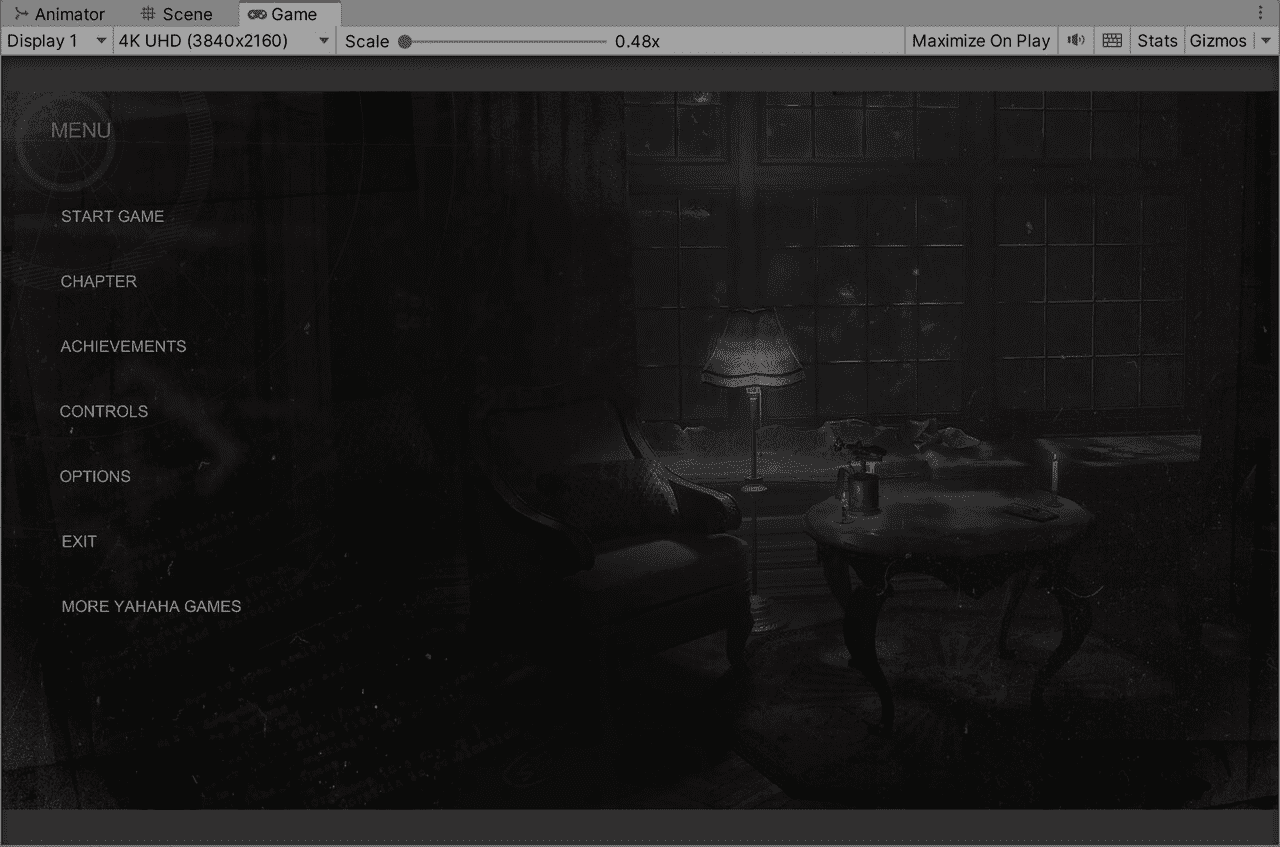Coming from Unity
This section allows Unity developers to efficiently work on YAHAHA projects. Using a horror project as an example, it compares key workflows between Unity and YAHAHA Studio, highlighting how features are implemented in each platform.
System Requirements
- OS: Windows x64 / macOS (Intel/ARM)
- Unity: 2020.3.42f1 (required; newer versions blocked)
- Download: Unity 2020.3.42 Release 1
- Plugin: v1.7.27-preview.1 (private distribution)
Opening the Project
Locate the Plugin project at: Unity project\yahahaunityplugintemplateproject within the provided compressed package.
The kit uses two scene types: Main Scene and Sub-scene, both of which mirror Studio's structure.
Main Scene
The Main Scene acts as the persistent entry point, similar to Unity's default scene. It stores global configuration prefabs critical to the game's operation. Each prefab includes a YaLuaContainer component, which holds Lua scripts for global settings like input controls or UI rules. These configurations align with Studio's Game Settings but offer deeper customization in Unity.
| In Unity | In Studio |
|---|---|
 |
To create a Main Scene:
- Create an empty scene in
Assets/YahahaResources/Scenes. - Remove default objects (Light, Camera).
- Use the Prepare Scene Settings menu (Tools > Yahaha) to auto-configure necessary prefabs.

Sub-scene
Sub-scenes contain gameplay content and are dynamically loaded/unloaded during play. Only one sub-scene can be active at a time. For example, a puzzle room might load as a Sub-scene when the player enters and unload when they exit.
Scene Packaging Workflow
-
In Unity's Build Settings, set the Main Scene as the first entry.
-
Add Sub-scenes in the order they appear in your game’s progression (e.g., Level 1, Level 2).
-
In the Main Scene, locate the
YaSubSceneConfigcomponent (attached to the Game Contents object) and click Refresh Build Settings to synchronize the scene list.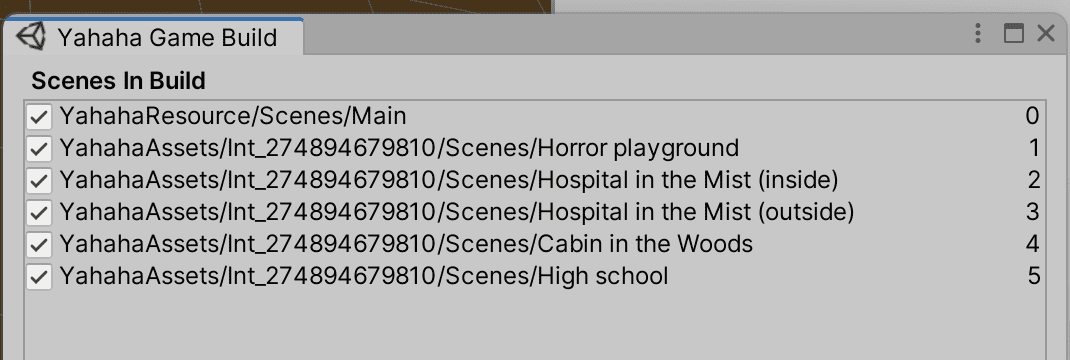
Working with Preconfigured Prefabs
The Plugin provides prefabs equivalent to Studio's logic components, such as interactive triggers or enemy AI. For instance, a Behavior component in Studio translates to a prefab with a YaLuaContainer in Unity. Compare the two environments side-by-side to identify matching workflows.
| In Unity | In Studio |
|---|---|
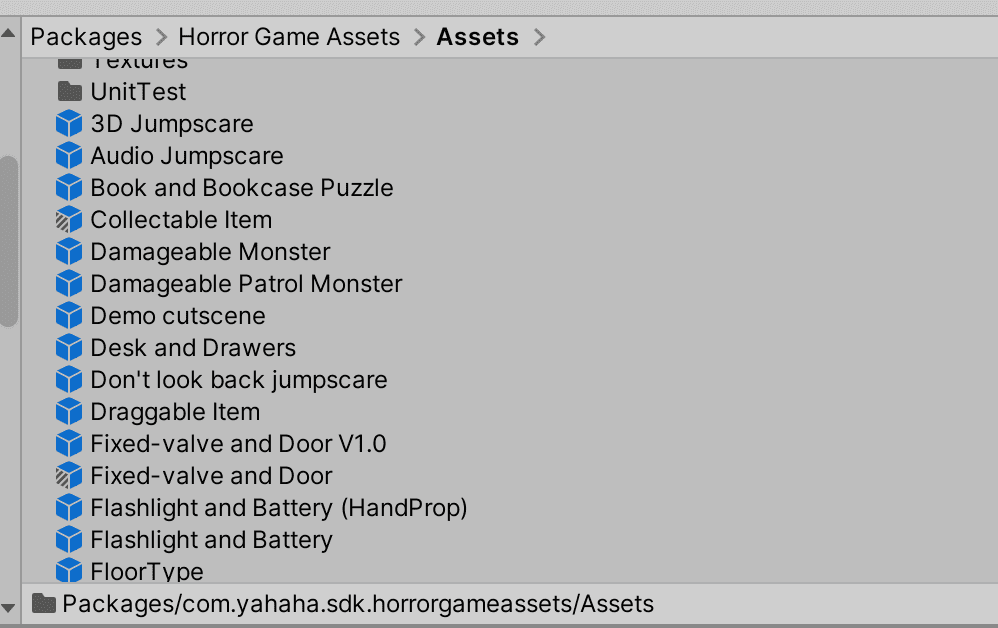 | 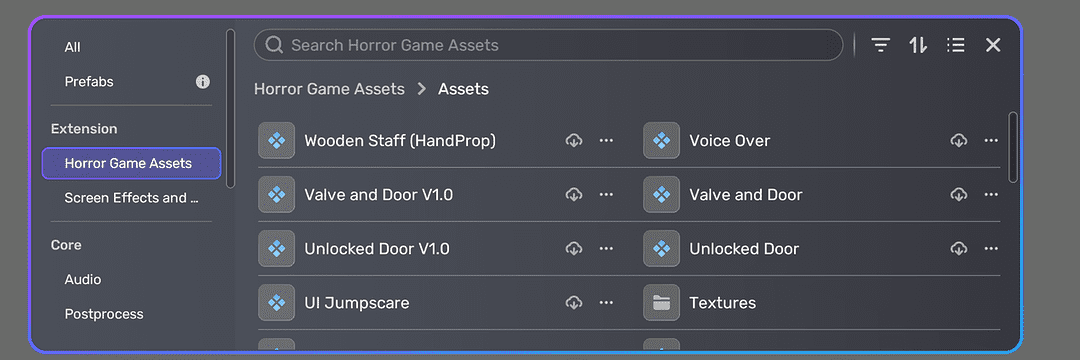 |
 | 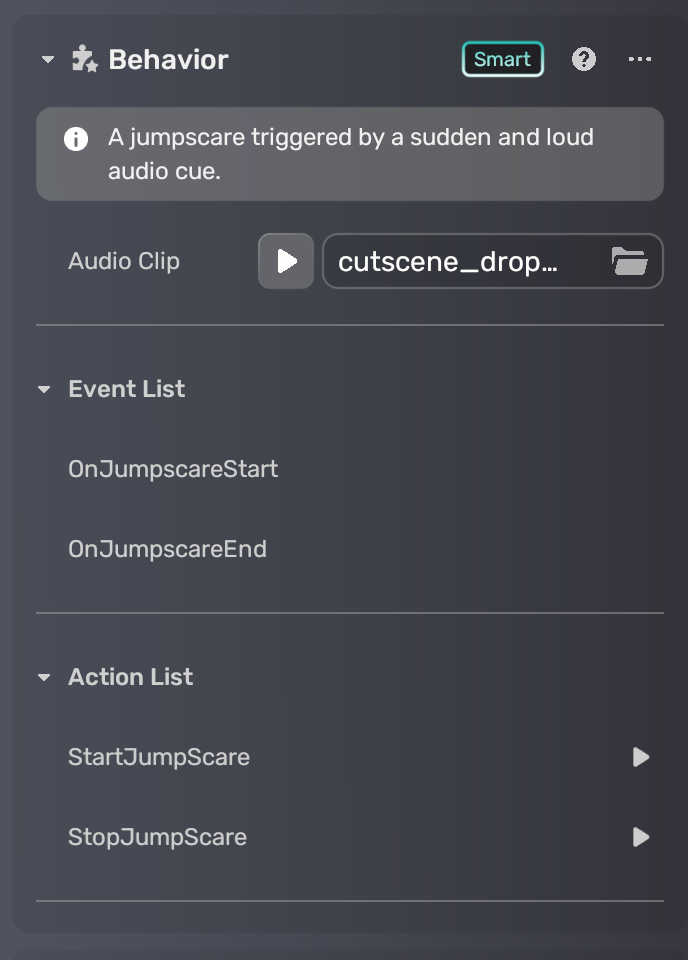 |
Adding Objects via Shortcut Menu
Studio's shortcut menu options (e.g., adding spawn points or teleporters) are replicated in Unity through prefabs located in Assets/YahahaResources/Prefabs. Drag these into scenes to quickly set up common gameplay elements.
| In Unity | In Studio |
|---|---|
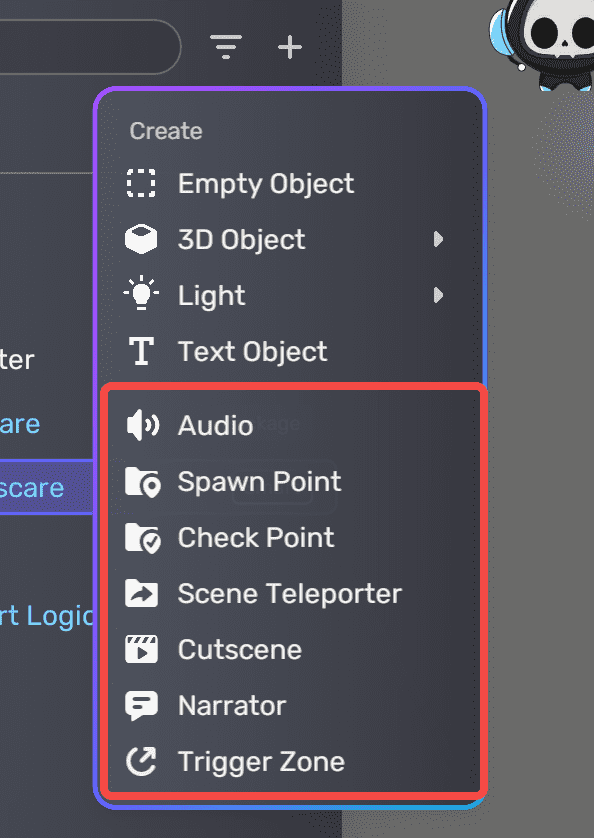 |
Attaching Lua Components
To add logic to objects:
-
Attach a
YaLuaContainercomponent to the target object. -
Use the Add Lua Component dropdown to select prebuilt scripts (e.g., AudioPlayer).
-
Configure properties in the Inspector. Use the Refresh button if changes don't appear immediately.
Example: Configuring an Audio Player
-
Place an Audio prefab in your scene and disable its Event Trigger.
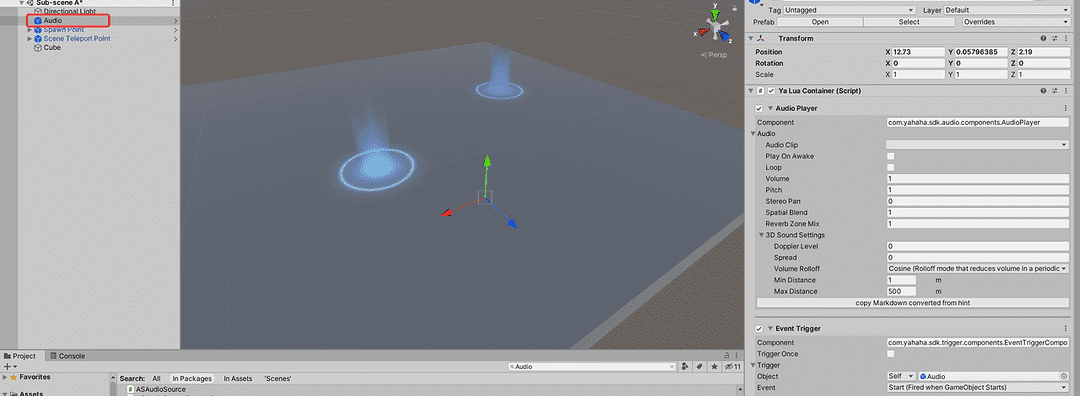
-
Import an audio file into Unity (e.g., .mp3 or .wav).

-
Add the audio to Resource Items (Project panel > YahahaResources > ResourceItems).
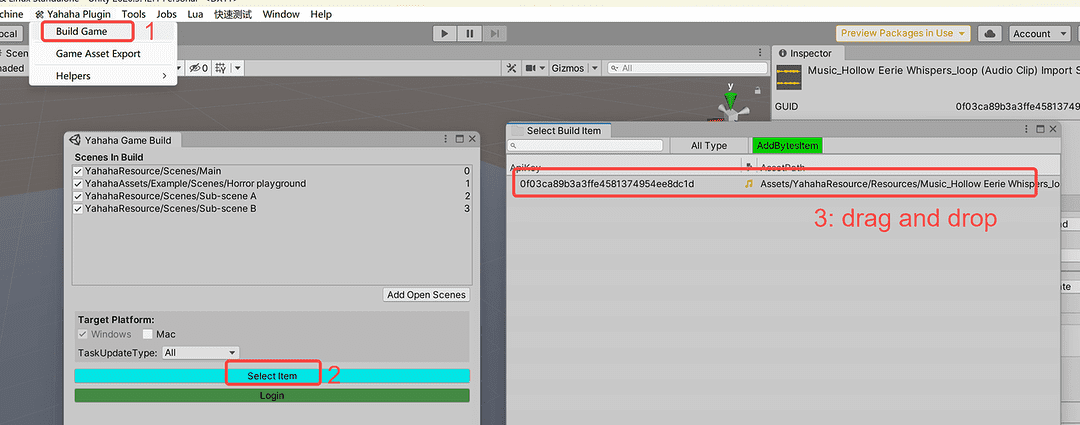
-
In the
AudioPlayercomponent, select the audio from the dropdown.
-
Use a Trigger Zone prefab to activate playback when the player enters.
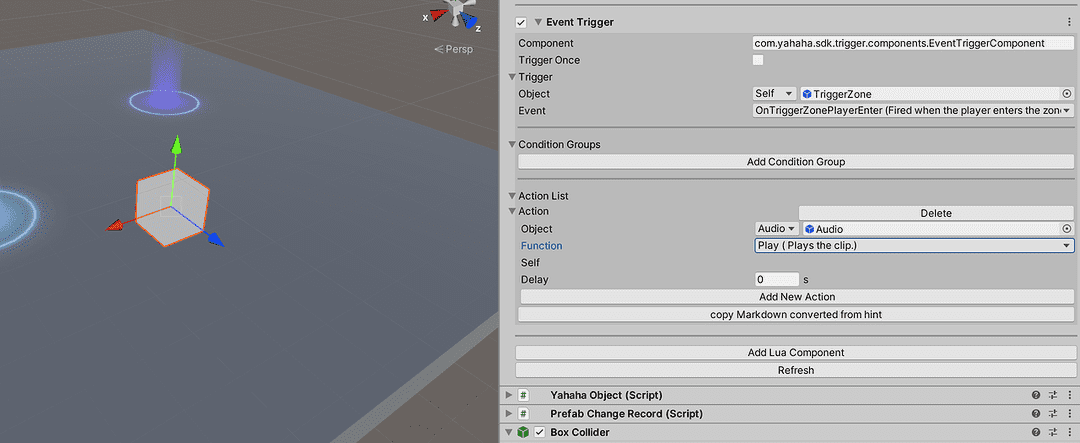
Multi-Scene Setup
Step 1: Create the Main Scene
- Follow the steps under Main Scene above.
Step 2: Build Sub-scenes
- Sub-scene A:
-
Create a scene with a simple platform (e.g., a Cube).
-
Add Spawn Point and Scene Teleport Point prefabs (default settings).
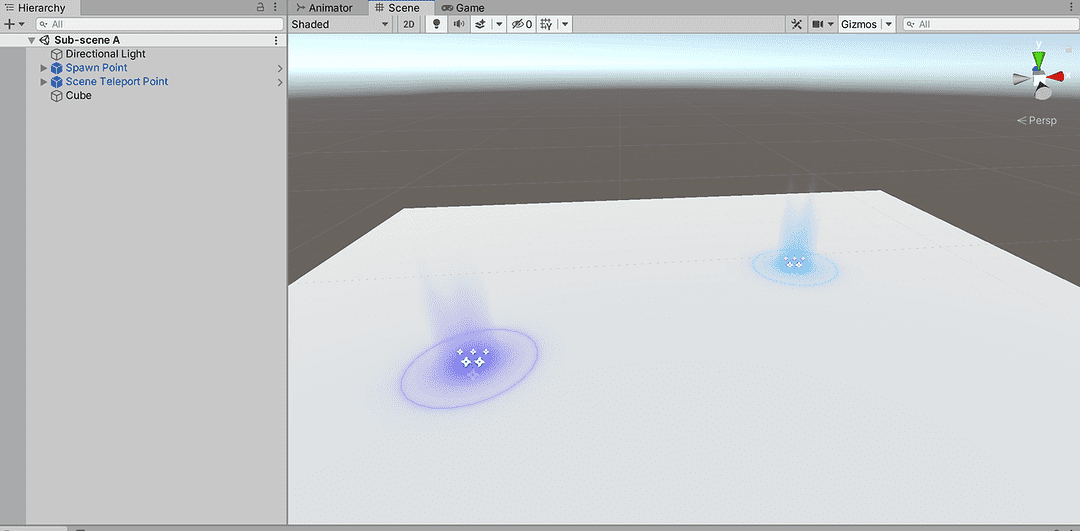
-
- Sub-scene B:
- Duplicate Sub-scene A and modify the Teleport Point’s target scene.
Step 3: Configure Build Order
-
In Build Settings, arrange scenes as: Main > Sub-scene A > Sub-scene B.
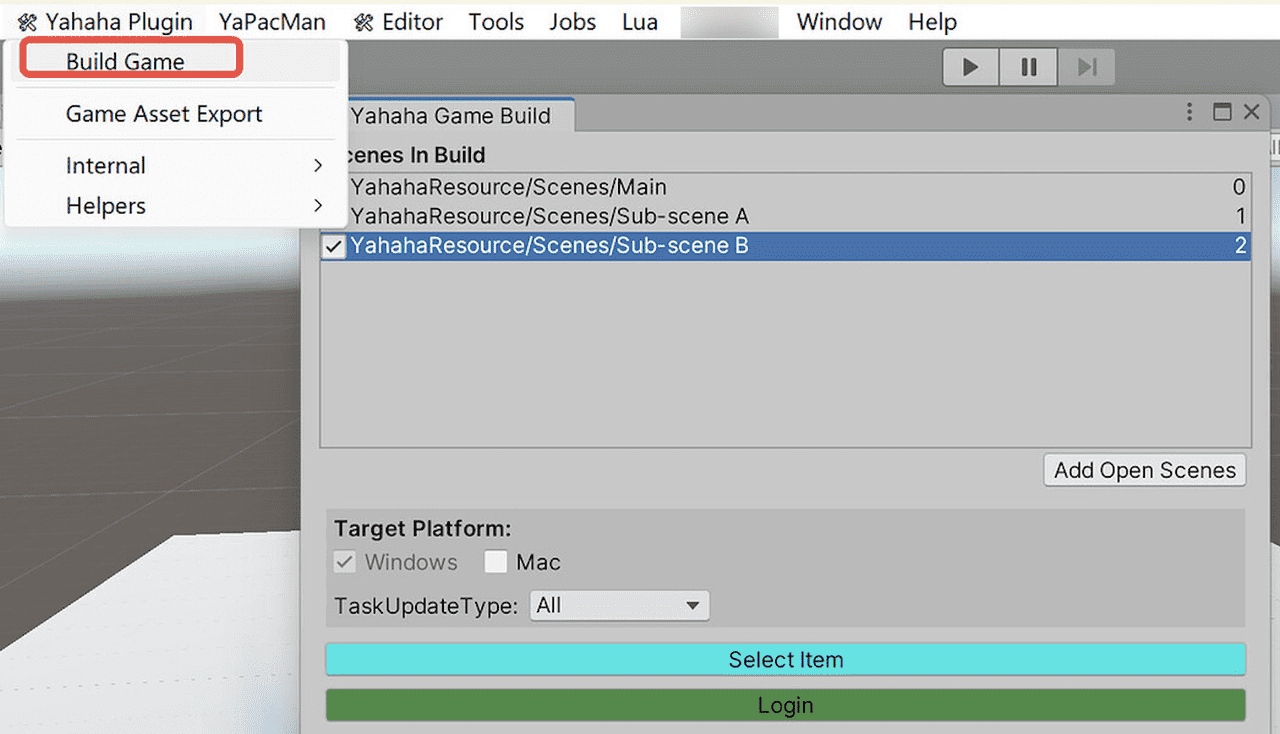
-
In the Main Scene's
YaSubSceneConfig, click Refresh Build Settings to update the list.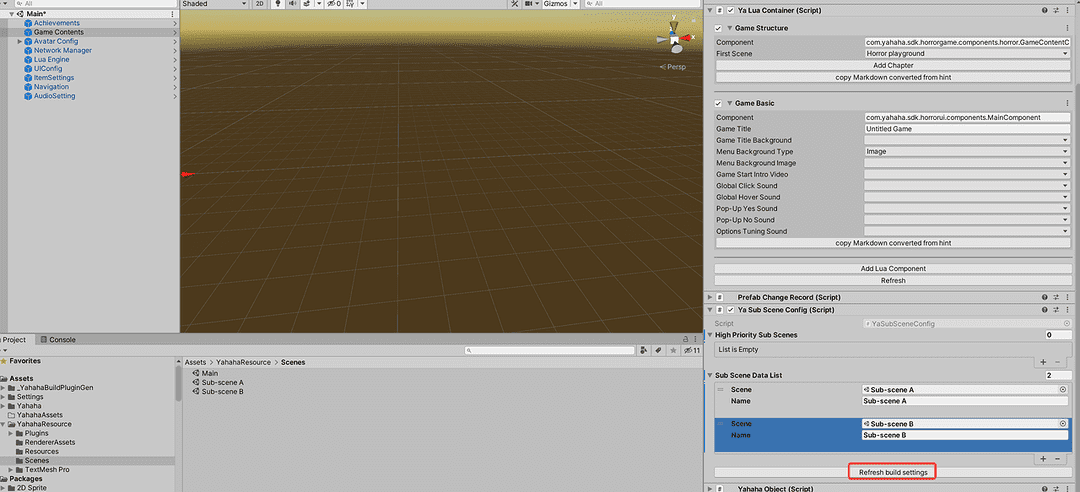
-
Assign the initial Sub-scene (e.g., Sub-scene A) via the First Scene dropdown.
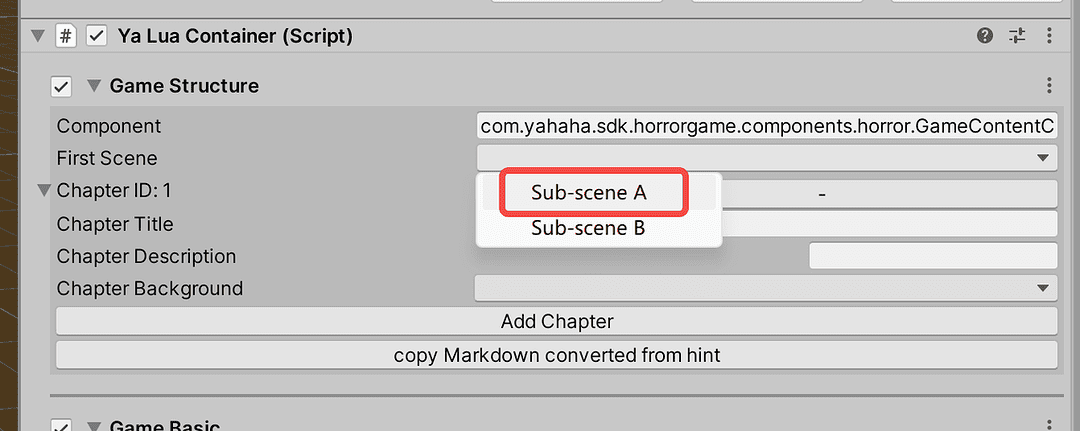
Testing
Open the Main Scene and press Unity's Play button to test transitions.
